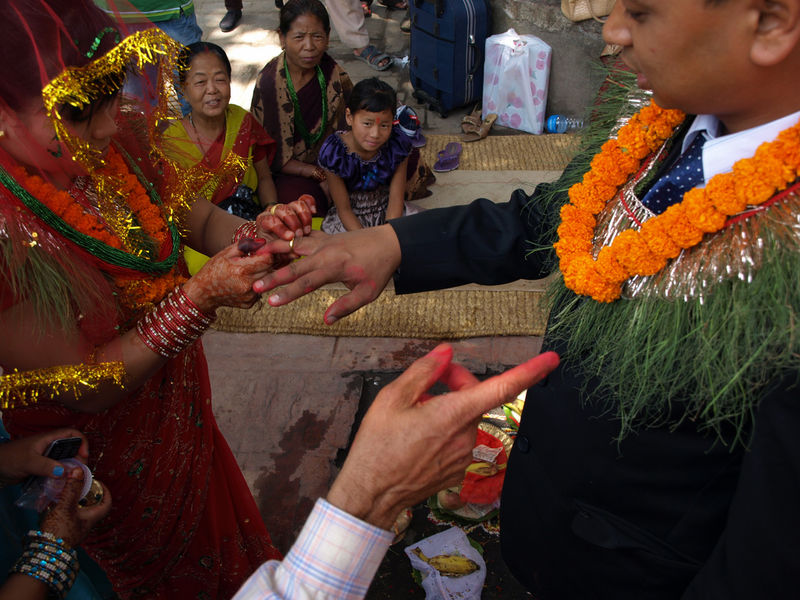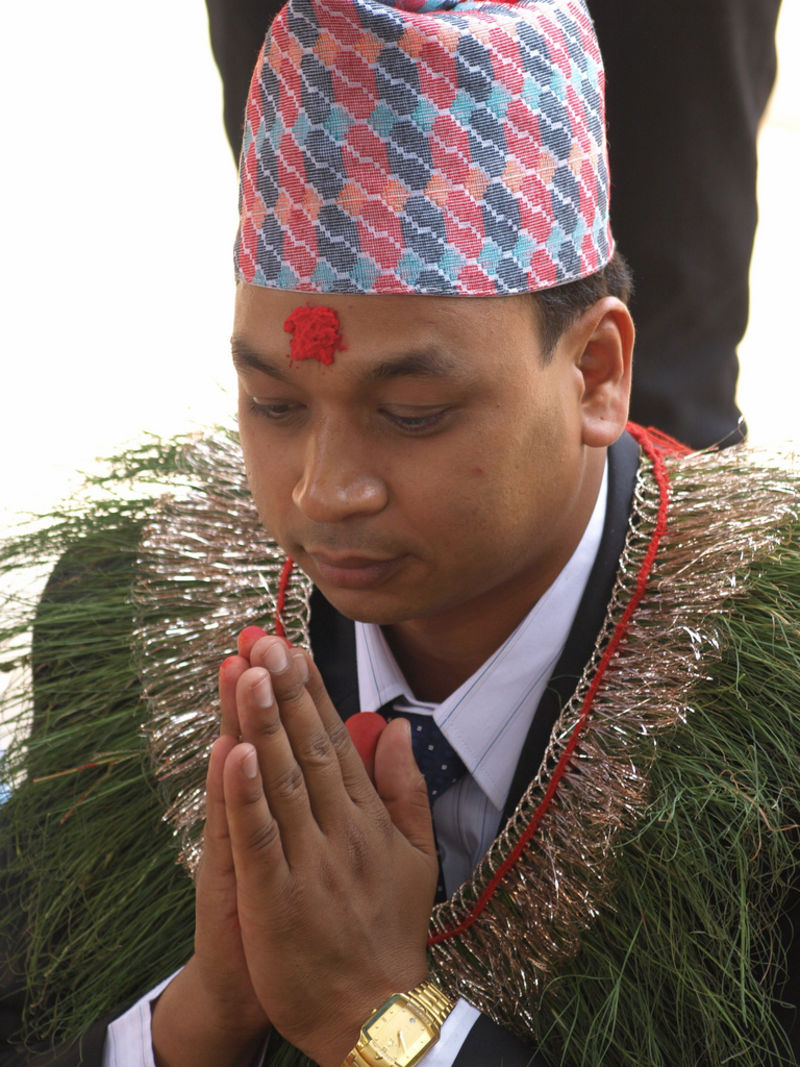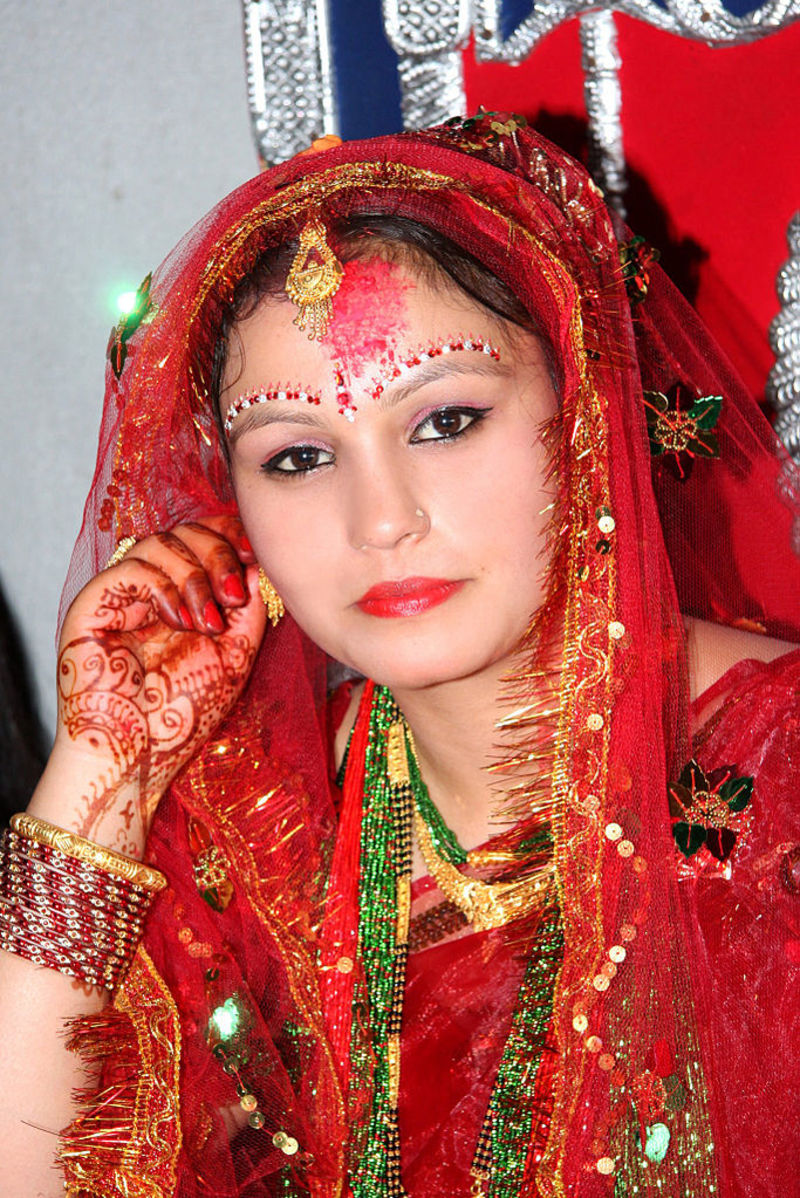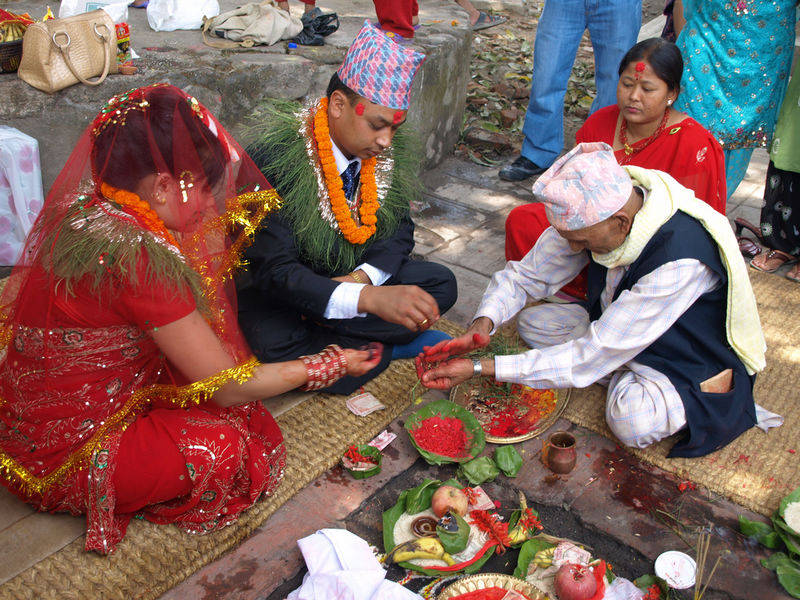Nepali Wedding Traditions
Nepali weddings, which often result from family arrangements, blend Hindu and Buddhist traditions and can last from one to three days. Key rituals include engagement ceremonies, processions, and symbolic acts like the "kanyadaan" and the exchange of "pote" necklaces and prayer beads. Post-wedding, the bride moves to the groom's home, where rituals and games symbolize her integration into the new family.
Nepali Wedding
Due to existence of various nationalities and caste social system there are quite many Nepali wedding traditions. Most local weddings still represent the result of an agreement reached by two families. Weddings in Nepal lasts between one and three days. The Nepalis usually get married in Hindu or Buddhist wedding ceremony.
Arranged marriages dominate in Nepal. But there are differences between cities and villages. Still the bride and groom can usually accept it or decline it. There is a belief that a bride should be of even age (for example, 20, 22). If she is of odd age her future husband could die soon.
The Newar people live in the Katmandu Valley. Their women get married three times. The first time it is before the puberty. They marry a bael fruit (aegle marmelos). It is believed that this fruit symbolizes the Lord Vishnu. On the second occasion they marry the sun. Their third wedding is to the real person.

The caste system plays a very important role in the local society. There is a rule according to which a person can not marry someone from the other caste. The Buddhists in Nepal traditionally do not have engagement and ceremonies related to it. But a short engagement ceremony is performed in more modern families.
On the other side Hindus in Nepal have an engagement ceremony called "tika-tala". The groom, his family and some friends visit the bride's home. A small dark red dot is made on the forehead of both bride and groom during the "aarti" religious ritual. A time and date of the wedding or "muhurat" is set with the help of local priest ("pundit"). Astrological data for both the bride and groom are very important.

The next in numerous rituals related to weddings is a Ganesh pooja known as "bagdan". During this ritual a bride's father holds a pot ("kalash"). He then gives the pot to the groom's father. This act symbolically shows that his "giving" his daughter to the future groom.
After this pooja there is "swayamvara". During this rite a bride prays to the goddess Parvati. Then she chooses her groom from a group of men gathered for the occasion. Off course only one of them is a real groom. She puts a flower garland around the groom's neck.
The "saipata" ritual is performed next. It must be held at the exact time determined according to the astrological data. The groom sends prints of his palms on a piece of white cloth and some presents to the bride's home. A band performs before the arrival of these objects. The bride then sends the print of her palms to the groom.

Let's now move to the events held on the wedding day itself. Traditionally a bride, her family members and best friends fast. They honour their ancestors by performing the "nandi-shradha" and "matrika-poojam".
The groom and his family pray to Lord Vishnu or Ganesh. People gathered in the groom's home then form a procession or "janti" as the Nepalis call it. A popular music is performed. Everyone is having a great time.
After the groom and the procession arrive at the bride's home the members of her family walk around the groom three times. When walking they throw some "lawa-akshat" rice and flower petals at him.
The bride's family presents numerous presents that include pipal ("sacred fig"), betel nuts, sacred thread ("upanayana") etc. The bride then takes her position sitting next to the groom. Their feet are washed with a water from a copper vessel.

After this act the groom gets a conch shell. The shell is filled with rice, yoghurt, fruit, sandalwood, grass and some water. Little bit of rice, for example, is then thrown over his head. A priest performs a special rite to ward off evil spirits. According to Hindu tradition he gets a cow or a sum of money for his action.
The bride and groom then leave their position and enter the special room known as the "guptaghar". There they are dressed in the wedding clothes.
The priest then puts groom's right hand on the bride's right hand and performs the "kanyadaan" Hindu wedding ritual. A very important part of the series of events is the one where the groom gives "pote" necklaces to the bride. After that he makes a "sindoor" mark on the bride's forehead. He does it three times. This mark means that the woman is married.
The bride then feeds her husband with mixture of honey, yoghurt and "ghee". After that she eats the second part of the mixture herself.
As part of the wedding ceremony a bride and groom traditionally exchange Hindu prayer beads ("malas"). In Nepal these beads are made of grass. Wedding rings are exchanged immediately after that.
After the wedding a couple goes to the groom's home. There the ritual "chaturthi karma" is performed. The bride is introduced to the groom's mother. Traditionally some games are played. For example, the couple searches for coins in the pile of rice. This act symbolizes the need for cooperation in everyday issues.
References
Wedding Customs in Nepal
http://www.nepal.com/wedding-customs/
Nadya, The Essential Guide to Nepali Weddings
http://thebigfatindianwedding.com/2015/the-essential-guide-to-nepali-weddings-introduction
Newar people
https://en.wikipedia.org/wiki/Newar_people
Aegle marmelos
https://en.wikipedia.org/wiki/Aegle_marmelos
Image(s)
Nepali Hindu bride (photo by Nirmal Dulal)
https://commons.wikimedia.org/wiki/File:Nepali_Bride.jpg
Nepali wedding ceremony (photo by Sara Parker, Flickr)
https://www.flickr.com/photos/saralparker/4555036022/
Nepali groom (photo by Sara Parker, Flickr)
https://www.flickr.com/photos/saralparker/4554955170/in/album-72157623811656149/
Exchange of wedding rings (photo by Sara Parker)
https://www.flickr.com/photos/saralparker/4554377393/in/album-72157623811656149/
Wikimedia Commons - File:Himalayas, Ama Dablam, Nepal.jpg